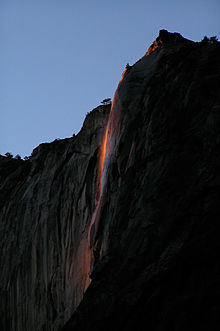슈퍼버블
Superbubble슈퍼버블(superubble) 또는 슈퍼셸(superhell)은 지름 수백 광년이고 주변 성간 매질보다 밀도가 낮은 뜨거운(10K6) 가스 원자로 채워진 공동으로, 이 매질에 맞닿아 여러 개의 초신성과 항성풍에 의해 파헤쳐집니다.새로 태어난 별들의 바람, 통과, 중력은 다른 먼지나 [2]가스의 초거품을 제거한다.태양계는 수백 광년 [citation needed]이상 떨어진 거리에 있는 외부 별들의 갑작스런 먼지의 소멸이 경계를 추적할 수 있는 국부 거품이라고 알려진 오래된 슈퍼버블의 중심 근처에 있습니다.
형성
태양 질량이 8에서 약 100에 이르는 가장 질량이 큰 별과 OB와 B의 분광형을 가진 가장 무거운 별들은 보통 OB 성협이라고 불리는 그룹에서 발견됩니다.질량이 큰 O형 별들은 강한 항성풍을 가지고 있으며, 이 별들 대부분은 수명이 다했을 때 초신성으로 폭발합니다.
가장 강한 항성풍은 별의 수명 동안 10erg(10J)의5144 운동 에너지를 방출하는데, 이는 초신성 폭발과 맞먹는다.이러한 바람은 수십 광년 [3]지름의 별풍선을 형성할 수 있습니다.OB 성협 안에서 별들은 그들의 바람 거품이 합쳐질 정도로 충분히 가까이 있으며 슈퍼버블이라고 불리는 거대한 거품을 형성한다.별들이 죽으면, 마찬가지로 초신성 폭발은 수백 km의−1 초속까지 팽창 속도를 가진 더 큰 크기에 도달할 수 있는 폭발파를 일으킨다.OB 성협의 별들은 중력에 묶여 있지 않지만, 작은 속도(약 20km−1 s)로 떨어져 나가며, 연료를 빠르게 소진합니다(수백만 년 후).결과적으로, 그들의 초신성 폭발의 대부분은 항성풍 [4][5]기포에 의해 형성된 공동 안에서 발생합니다.이러한 폭발은 눈에 보이는 초신성 잔해를 형성하지 않고 대신 음파로 뜨거운 내부에서 에너지를 소비합니다.따라서 항성풍과 항성폭발 모두 성간매질의 초거품 팽창에 동력이 됩니다.
슈퍼버블에 휩쓸려 올라온 성간 가스는 일반적으로 냉각되어 캐비티 주위에 조밀한 껍데기를 형성합니다.이 껍데기들은 [6]수소로부터 21cm 떨어진 곳의 선 방출에서 처음 관측되었고, 이는 초거품 형성 이론의 공식으로 이어졌다.그것들은 또한 뜨거운 내부로부터의 X선 방출, 이온화된 껍데기로부터의 광학선 방출, 그리고 껍데기에 쓸려 올라간 먼지로부터의 적외선 연속체 방출에서도 관찰된다. X선과 가시적인 방출은 일반적으로 젊은 초거품에서 관찰되는 반면 21 센티미터로 보이는 오래된 큰 물체들은 심지어 m에서 발생할 수 있다.궁극적으로는 슈퍼버블의 결합이며, 슈퍼헬이라고 부르는 것으로 구별되기도 한다.
충분히 큰 슈퍼버블은 은하 원반 전체를 통해 폭발하여 주변 은하 후광이나 은하간 매체로 에너지를 [7][8]방출할 수 있습니다.
예
- 대마젤란 구름의 [9][10]LHA 120-N 44(N44)입니다.
- 한때 "스니커즈"라고 불렸던 슈퍼셸인 안티엔터 셸
- 헤니즈[1] 70
- 모노젬[11] 링
- 오피우쿠스 슈퍼버블[12][13]
- 스쿠텀[14][15] 슈퍼셸
- 오리온에리다누스 슈퍼버블
- 페르세우스-토러스[16][17] 셸
- 로컬 버블
이미지 갤러리
레퍼런스
- ^ a b 헤니즈 70: LMC의 슈퍼버블, 오늘의 천문사진, 1999-11-30
- ^ Thomson, Jason (2016-05-18). "Sublime image reveals superbubbles, star formation, and satellite galaxies". ProQuest 1789525419.
- ^ Castor, J.; McCray, R.; Weaver, R. (1975). "Interstellar Bubbles". Astrophysical Journal Letters. 200: L107–L110. Bibcode:1975ApJ...200L.107C. doi:10.1086/181908.
- ^ Tomisaka, K.; Habe, A.; Ikeuchi, S. (1981). "Sequential explosions of supernovae in an OB association and formation of a superbubble". Astrophys. Space Sci. 78 (2): 273–285. Bibcode:1981Ap&SS..78..273T. doi:10.1007/BF00648941.
- ^ McCray, R.; Kafatos, M. (1987). "Supershells and Propagating Star Formation". Astrophysical Journal. 317: 190–196. Bibcode:1987ApJ...317..190M. doi:10.1086/165267. hdl:2060/19870005634.
- ^ Heiles, C. (1979). "H I shells and supershells". Astrophys. J. 229: 533–544. Bibcode:1979ApJ...229..533H. doi:10.1086/156986.
- ^ Tomisaka, K.; Ikeuchi, S. (1986). "Evolution of superbubble driven by sequential supernova explosions in a plane-stratified gas distribution". Publ. Astron. Soc. Jpn. 38 (5): 697–715. Bibcode:1986PASJ...38..697T.
- ^ Mac Low, M.-M.; McCray, R. (1988). "Superbubbles in Disk Galaxies". Astrophysical Journal. 324: 776–785. Bibcode:1988ApJ...324..776M. doi:10.1086/165936.
- ^ "A Cosmic Superbubble". ESO Photo Release. Retrieved 20 July 2011.
- ^ Nemiroff, R.; Bonnell, J., eds. (6 February 2006). "N44 Superbubble". Astronomy Picture of the Day. NASA.
- ^ 모노젬 링, 인터넷 과학 백과사전
- ^ Pidopryhora, Yurii; Lockman, Felix J.; Shields, Joseph C. (2007). "The Ophiuchus Superbubble: A Gigantic Eruption from the Inner Disk of the Milky Way". Astrophysical Journal. 652 (2): 928–942. arXiv:astro-ph/0610894v1. doi:10.1086/510521.
- ^ "Huge 'Superbubble' of Gas Blowing Out of Milky Way". PhysOrg.com. 2006-01-13. Retrieved 2008-07-04.
- ^ Savage, Blair D.; Sembach, Kenneth R.; Howk, J. Christopher (February 2001). "STIS and GHRS Observations of Warm and Hot Gas Overlying the Scutum Supershell (GS 018−04+44)". Astrophysical Journal. 547 (2): 907–921. Bibcode:2001ApJ...547..907S. doi:10.1086/318411.
- ^ Callaway, Matthew B.; Savage, Blair D.; Benjamin, Robert A.; Haffner, L. Matthew; Tufte, Steve L. (1 April 2000). "Observational Evidence of Supershell Blowout in GS 018-04+44: The Scutum Supershell". Astrophysical Journal. 532 (2): 943–969. Bibcode:2000ApJ...532..943C. doi:10.1086/318411.
- ^ a b "'Superbubble' region of star formation was created by supernovae, study suggests". Physics World. 11 October 2021. Retrieved 18 October 2021.
- ^ a b Bialy, Shmuel; Zucker, Catherine; Goodman, Alyssa; Foley, Michael M.; Alves, João; Semenov, Vadim A.; Benjamin, Robert; Leike, Reimar; Enßlin, Torsten (1 September 2021). "The Per-Tau Shell: A Giant Star-forming Spherical Shell Revealed by 3D Dust Observations". The Astrophysical Journal Letters. 919 (1): L5. arXiv:2109.09763. doi:10.3847/2041-8213/ac1f95. ISSN 2041-8205. S2CID 237581543.
- ^ "1,000-light-year Wide Bubble Surrounding Earth Is Source Of All Nearby, Young Stars - SCIENMAG: Latest Science And Health News". 12 January 2022. Retrieved 12 February 2022.
- ^ Zucker, Catherine; Goodman, Alyssa A.; Alves, João; Bialy, Shmuel; Foley, Michael; Speagle, Joshua S.; Großschedl, Josefa; Finkbeiner, Douglas P.; Burkert, Andreas; Khimey, Diana; Swiggum, Cameren (January 2022). "Star formation near the Sun is driven by expansion of the Local Bubble". Nature. 601 (7893): 334–337. doi:10.1038/s41586-021-04286-5. ISSN 1476-4687.
외부 링크
- Tenerio-Tagle, G. & Bodenheimer, P. "은하의 대규모 확장 상부 구조"1988년 천문 및 천체물리학 연례 리뷰 26, 145~197.개요








